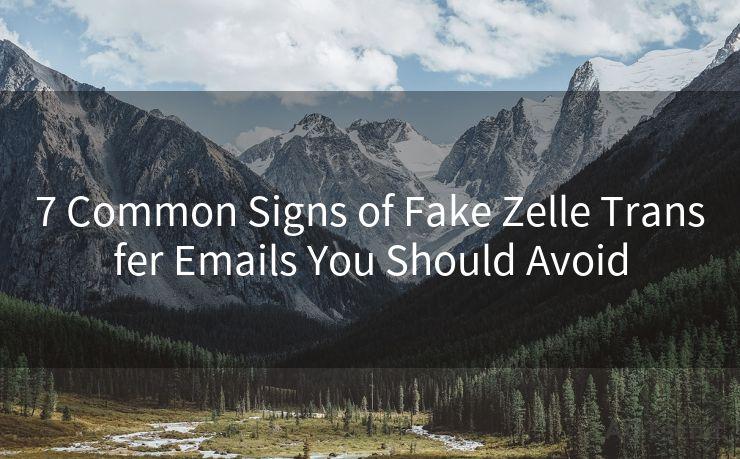7 Common Signs of Fake Zelle Transfer Emails You Should Avoid




In the digital age, online payment systems like Zelle have become increasingly popular for quick and convenient money transfers. However, with this popularity, scammers have also found new opportunities to prey on unsuspecting users. Fake Zelle transfer emails are one such scam, designed to lure victims into divulging sensitive information or clicking malicious links. To protect yourself, it's crucial to recognize the common signs of these fraudulent emails. Here are seven red flags to watch out for:
1. Suspicious Sender Addresses
Always check the email address of the sender. Fake Zelle emails often use addresses that look similar to official Zelle or bank email addresses but with slight variations. Be wary of any email that doesn't come from an official, verified source.
2. Urgent or Threatening Tone
Scammers often use urgent or threatening language in their emails to pressure recipients into quick action. If an email claims that your account will be suspended or there's an urgent need to verify your information, this is a red flag. Zelle or your bank will not use such tactics.
3. Requests for Sensitive Information
Zelle or your bank will never ask for sensitive personal information, such as passwords, PINs, or social security numbers, via email. If an email requests such information, it's likely a scam.

4. Poor Grammar and Spelling
Official communications from Zelle or your bank will be professionally written and proofread, with proper grammar and spelling. Fake emails often contain numerous grammatical errors and spelling mistakes, which are telltale signs of their fraudulent nature.
5. Suspicious Links or Attachments
Never click on links or open attachments in suspicious emails. These may contain malware or lead you to phishing websites designed to steal your personal information. Hover over any links to check their destination before clicking, and only open attachments if you are absolutely sure they are safe.
🔔🔔🔔
【AOTsend Email API】:AOTsend is a Managed Email Service for sending transactional emails. Support Email Types: reminders, authentication, confirmations, notifications, verification codes, invoices, password resets, account activations, billing statements, two-factor authentication (2FA), and one-time passwords (OTP) emails, etc. $0.28 per 1000 Emails. 99% Delivery, 98% Inbox Rate.
You might be interested in:
Why did we start the AOTsend project, Brand Story?
What is a Managed Email API, How it Works?
Best 25+ Email Marketing Platforms (Authority,Keywords&Traffic Comparison)
Best 24+ Email Marketing Service (Price, Pros&Cons Comparison)
Email APIs vs SMTP: How they Works, Any Difference?
6. Unrealistic Offers or Claims
If an email promises unrealistic rewards, such as large sums of money for little or no effort, it's probably a scam. Zelle or your bank will not make such offers via email.
7. Lack of Personalization
Official emails from Zelle or your bank will often include your name and specific account details. Fake emails tend to be more generic and lack personalization.
By being aware of these seven common signs of fake Zelle transfer emails, you can protect yourself from falling victim to these scams. Remember, always be cautious when receiving unsolicited emails related to financial transactions, and never divulge sensitive information without verifying the source first. Stay vigilant, and you'll be able to avoid these fraudulent emails and keep your personal information safe.
In conclusion, protecting yourself from fake Zelle transfer emails requires vigilance and awareness. By recognizing the common signs of these scams and taking precautions, you can avoid falling victim to fraud. Remember, your bank or Zelle will never ask for sensitive information via email, so always be suspicious of any such requests.




Scan the QR code to access on your mobile device.
Copyright notice: This article is published by AotSend. Reproduction requires attribution.
Article Link:https://www.mailwot.com/p4169.html



